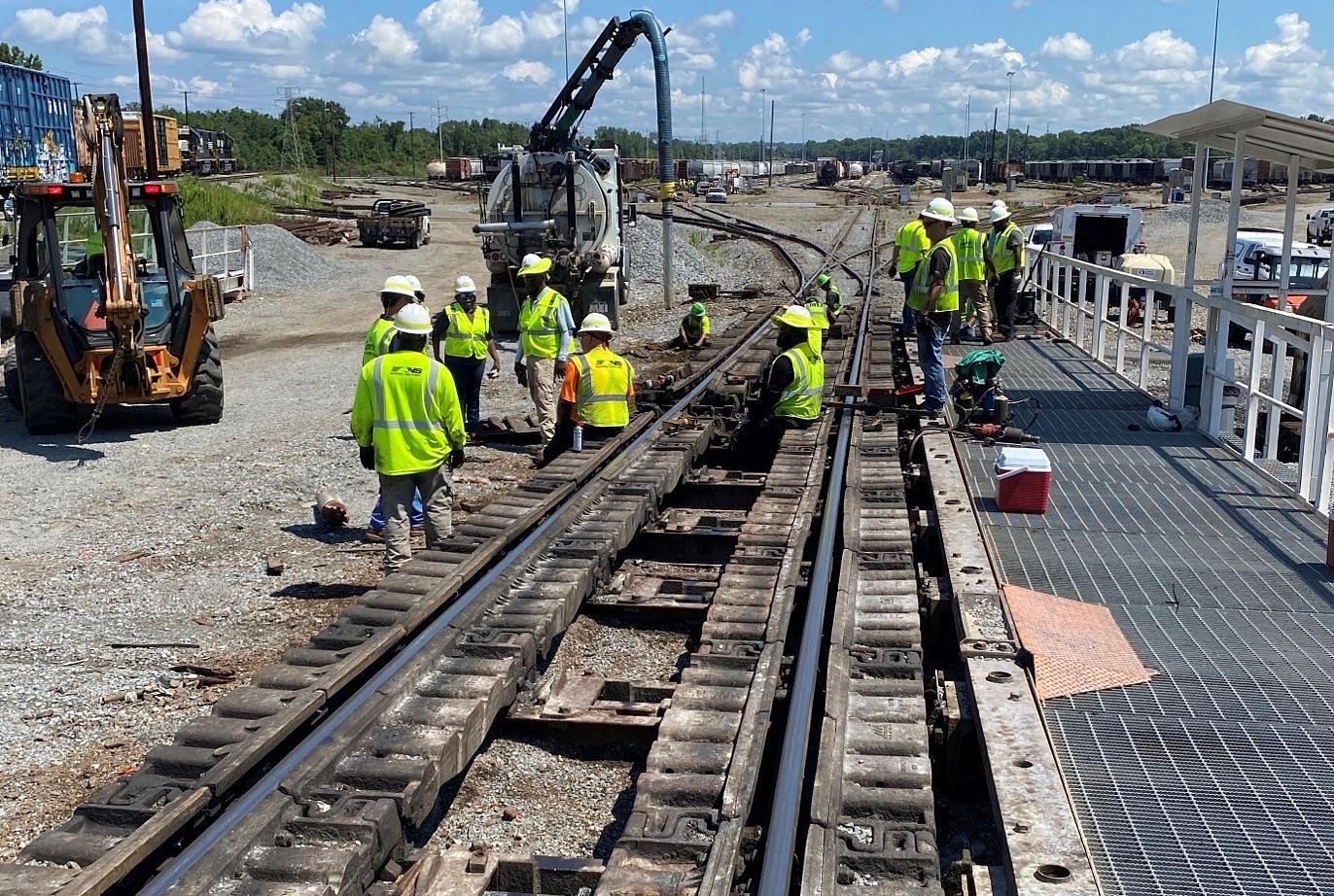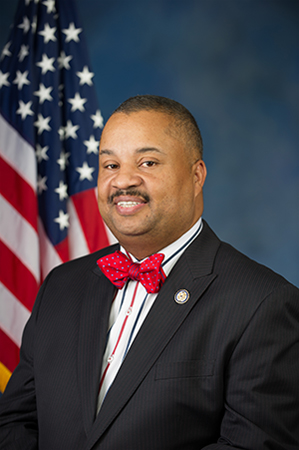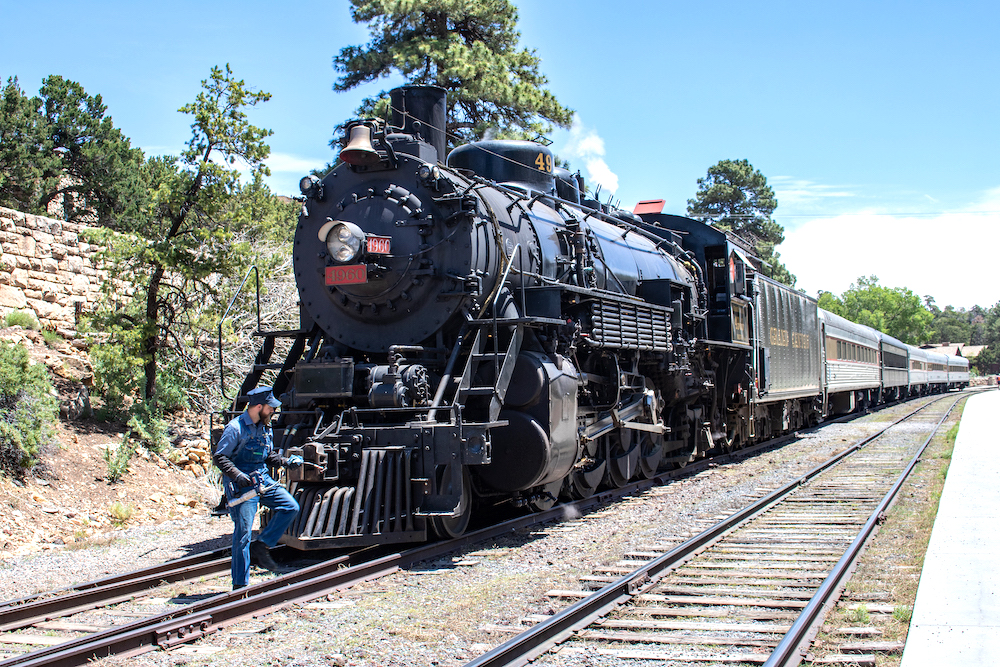When PTC is fully operational by the end of 2020, CSX will have invested $2.4 billion in the federally mandated safety system.
“It’s clearly important that we leverage that investment,” Lonegro says. “One of the clear ways to do that is through one-person crews and ultimately, way down the road, perhaps autonomous trains.”
Railroads are expected to face increased competition from the trucking industry, which is rapidly advancing technology that will permit platooning and driverless operation. That will significantly cut the cost of trucking and enable truckers to further siphon traffic from railroads.
From a technology perspective, it will be safer and easier for railroads to deploy autonomous operations because they operate a closed network where they control all of the traffic, Lonegro says.
The highway environment is vastly different, with multiple users and the lack of a fixed guideway like railroads enjoy.
The U.S. Department of Transportation under the Trump administration is taking a more balanced approach to technology and automation issues between modes, Lonegro says.
The Obama administration, by contrast, sought to advance technology in trucking while favoring regulations that would mandate two-person crews.
“I don’t think technology is ultimately going to be the holdup,” Lonegro says, pointing to fully autonomous railroad operations that have begun in Australia.
Rather, a host of labor, regulatory, and public policy issues will have to be addressed first. The full rollout of PTC by the end of 2020 likely will bring those issues to the forefront, Lonegro says.
The CFO says that he’s about to turn 50 and expects to see single-person crews by the end of his career.
Lonegro’s comments, which came in response to a question at the Cowen & Co. Global Transportation Conference on Sept. 5, are a reversal for CSX.
Last year, then-CEO E. Hunter Harrison said he didn’t understand the industry’s desire to move toward one-person crews.
“I’m not a one-man crew advocate,” Harrison said on CSX’s earnings call in April 2017, although he noted that there are situations where they might make sense, such as switching at mines.
“But today to take a 20,000-ton train on line of road, with one person, I don’t think it’s good business,” Harrison said, citing safety concerns and the value of an extra set of eyes and ears in the cab.
Plus, he said, it would pose unacceptable delays when a lone crew member has to contend with a broken air hose or a knuckle failure.
Harrison’s predecessor, Michael Ward, said that one-person crews were inevitable.
“There’s going to be autonomous vehicles out there. There’s no question. The only question is when and how much they will be deployed,” Ward said during the railroad’s earnings call in January 2017. With main lines under the protection of PTC, “one does have to question why there has to be two people in the crew,” Ward said.
“Longer term, that’s something we’re going to have to address,” Ward added, saying that he expected the industry to face challenging negotiations with labor unions.
But he said one-person crews are “inevitable. It’s just a question of when.”















” it will be safer and easier for railroads to deploy autonomous operations because they operate a closed network where they control all of the traffic.” How can it be a closed network with grade crossings, people taking shortcuts across the tracks. The network can not be considered closed when trains derail daily sometimes with serious consequences.
One-man operation is technically feasible but operationally irresponsible in the developed areas of the country.. It will last until a series of derailments and employee injuries become untenable to insurers and corporate bean-counters alike. The Rio Tinto operation in Australia traverses a barren, unpopulated wasteland with few grade crossings and no lineside residents. A derailment would probably hazard no one. For the same reason, the plausability of autonomous trucks in a mixed vehicle environment will prove to be unviable. There are simply too many dynamic variables to allow a safe system. I don’t know about anyone else, but I don.t want to cope with any autonomous vehicle on I-80 in wintertime Wyoming when there’s snow and ice nor the same in Chicago or Cleveland or Boston.
Once again the big boys in the head office talk about a remote Australian railroad run with no crew. It is not like US railroads that have multiple railroad crossings. It will be nice to see the day they send out a 14.000 foot train with no operator and it pulls a knuckle.
Conversions from janney to self-contained couplers are key to enabling one-person crews and autonomous trains. Utility elements would be embedded in the couplers as designed on light rail and high speed trains. So, air hoses and several M.U. cables would no longer require individual handling. That will be the greatest change since converting from link-and-pin.
As an aside, Amtrak and Via Rail Canada will no longer deal with the clutter of M.U. cables on their passenger trains to connect between cars.
TRAINS-MAG had a long article some years back on Quebec Cartier’s one-man crews, which are backed by an infrastructure of rescue personnel and stand-by helicopters. Ironic the more mega a train, the smaller the crew, because the mega-trains don’t do any work on route, they just go from point A to point B. More recently there was an item in TRAINS-MAG about the possibility of nose-to-tail trains coupled together, which would be run by one crew (or maybe one person) from the front train. Then the trains would uncouple at a crew change point to go their separate ways. I’m not advocating anything or making any point, just repeating what TRAINS-MAG writers see as the future. Anyone who wants to wade a mile through waist-deep snow at 3:00 AM along a ditch beside the tracks, to replace a broken coupler by himself (or herself), fighting off wolves and bobcats, can sign up for a one-person crew.
I think the idea is that if the train goes into emergency because of a broken knuckle that a “utility” worker shows up to help.
Something I never envisioned saying but; on this point I agree with the late EHH.
Just an idle thought but; I’ve occasionally contemplated the savings that could result through automation of all senior management and Wall Street analyst positions.
I, being an introvert, would prefer the one man crews because I would not have to work with anyone. Yet I also do fear that there might be some physiological damage to those employees who are working for hours and hours on end and have no human face to face contact. Yeah sure you have the radio which you will use periodically, yet I would think that there is a physiological side to one man crews that we also have to evaluate and think through as well.
Charles Ham
It would be less of a hassle if we started converting all Janney couplers to the type used on high speed trains in Europe and Asia(which are slowly being introduced to all types of service), they are completely self contained, including all connections for air, any electrical connections necessary and what ever else is included. That’s the future and it just doesn’t work for fixed train sets, it works for individual cars and locomotives as well.
This whole 1-person crew idea seems crazy to me. I guess that it does not matter if a knuckle or an air hose or some other problem sends a train into emergency out in the middle of nowhere and the lone engineer has to walk the train a mile, locate the problem, walk back to the locomotive, get the tools and the new part, walk back again to the problem, fix it and walk back to the loco and resume his trip. Events like broken air hoses or broken couplers are just not that uncommon. And how many hours will this add up to? And how many approaching trains will be held up while “Mr. Lonely” gets his train rolling again? How many crews, including our lone engineer might run out of time during one of these events? Management is asking for serious operational problems with single person crews. In my opinion.
Autonomous Trucks are still decades off.. Infrastructure still needs to be upgraded and “smart” road networks developed. As far as one man crews.. Unit trains would benefit from it. The trains that should have two man crews are manifest, and obviously local freight. Strike a deal with the unions and jump into short corridor intermodal lanes while you’re at it